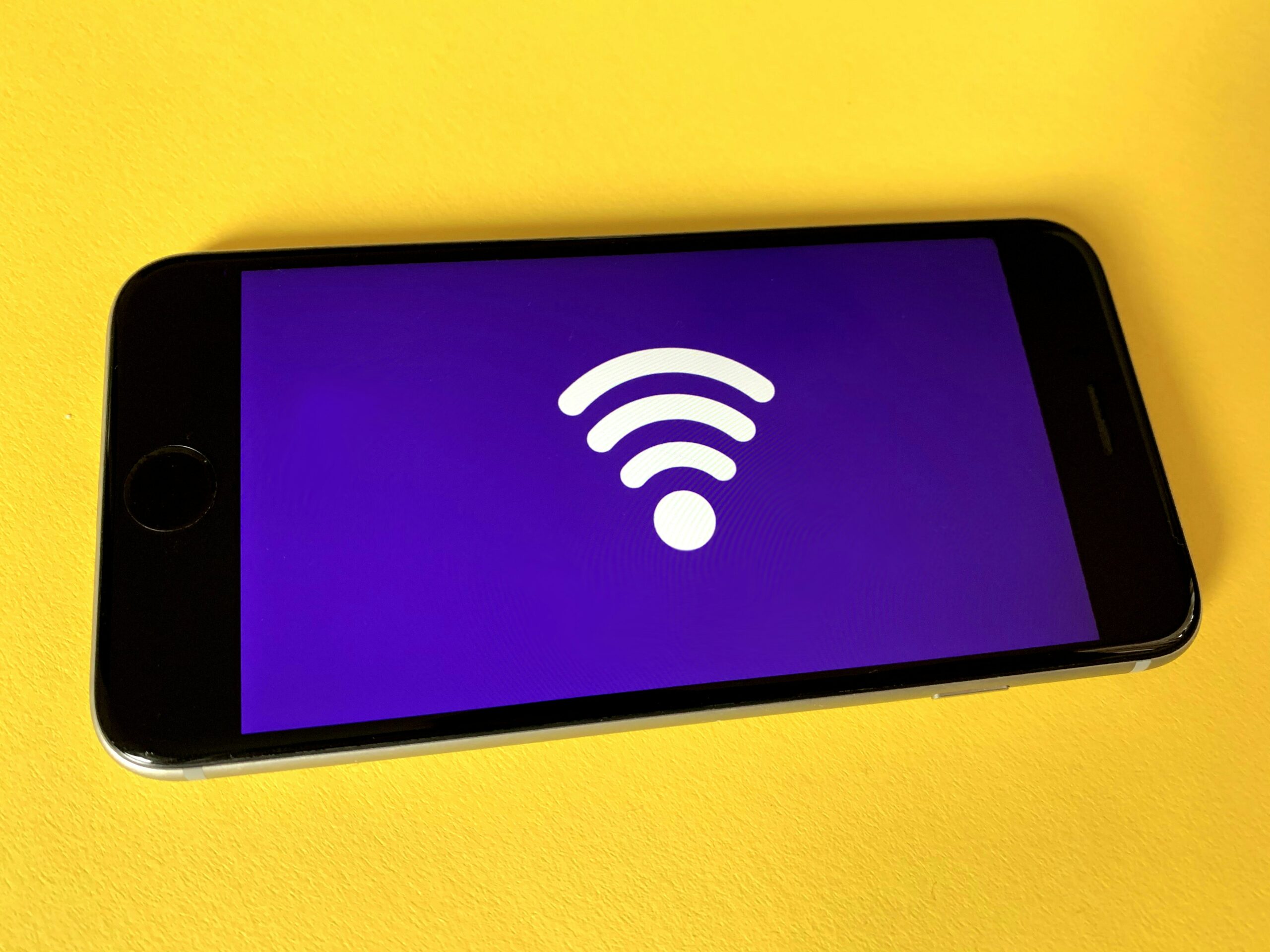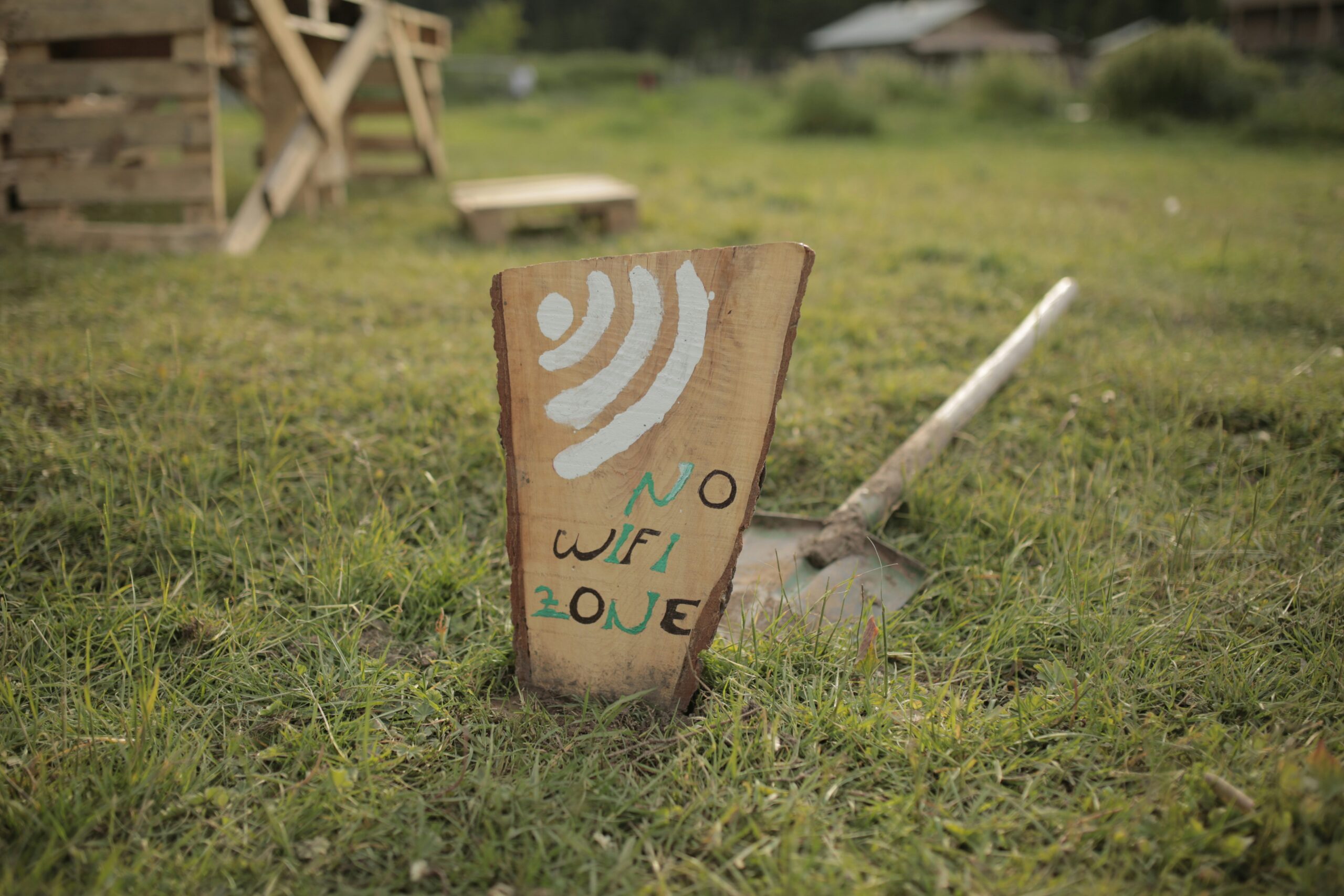How Oldsters of Okay-12 Scholars View On-line Finding out| Pew Analysis Middle
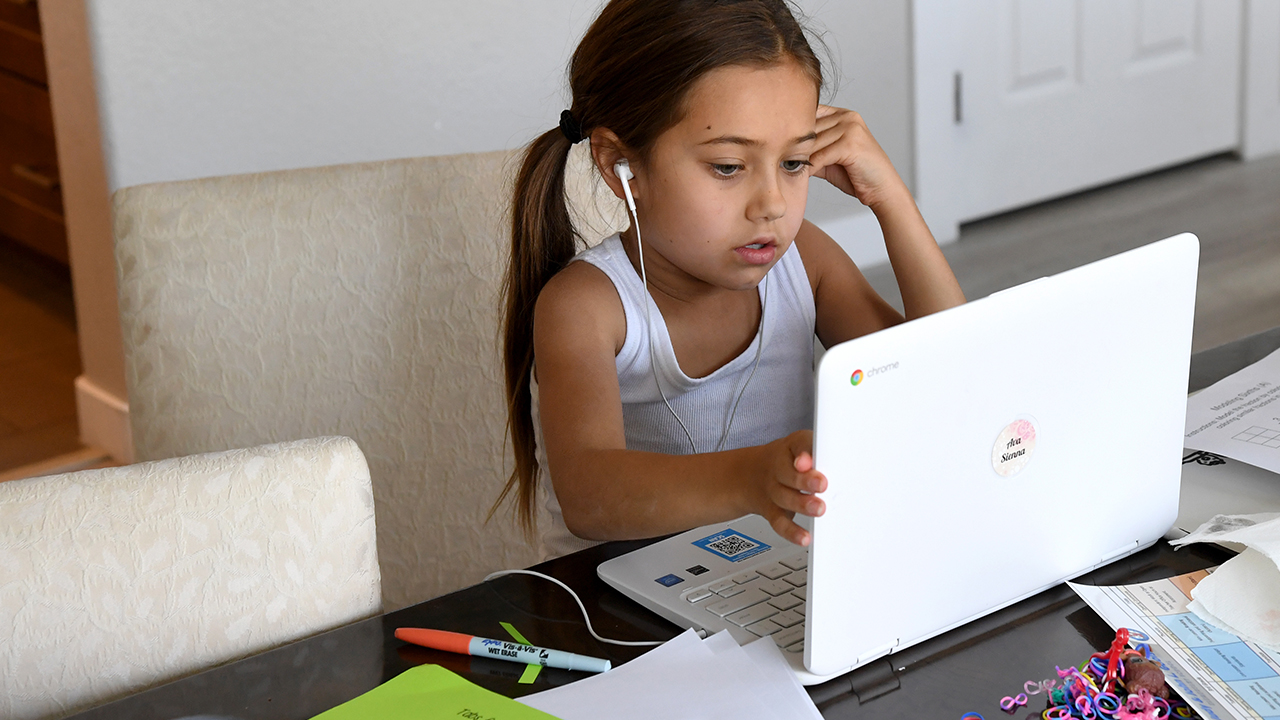
“Mother or father” is outlined right here because the guardian or mum or dad of a kid below age 18 who lives within the family.
“Heart revenue” is outlined right here as two-thirds to double the median annual circle of relatives revenue for panelists at the American Tendencies Panel. “Decrease revenue” falls under that vary; “higher revenue” falls above it. See the technique for extra main points.
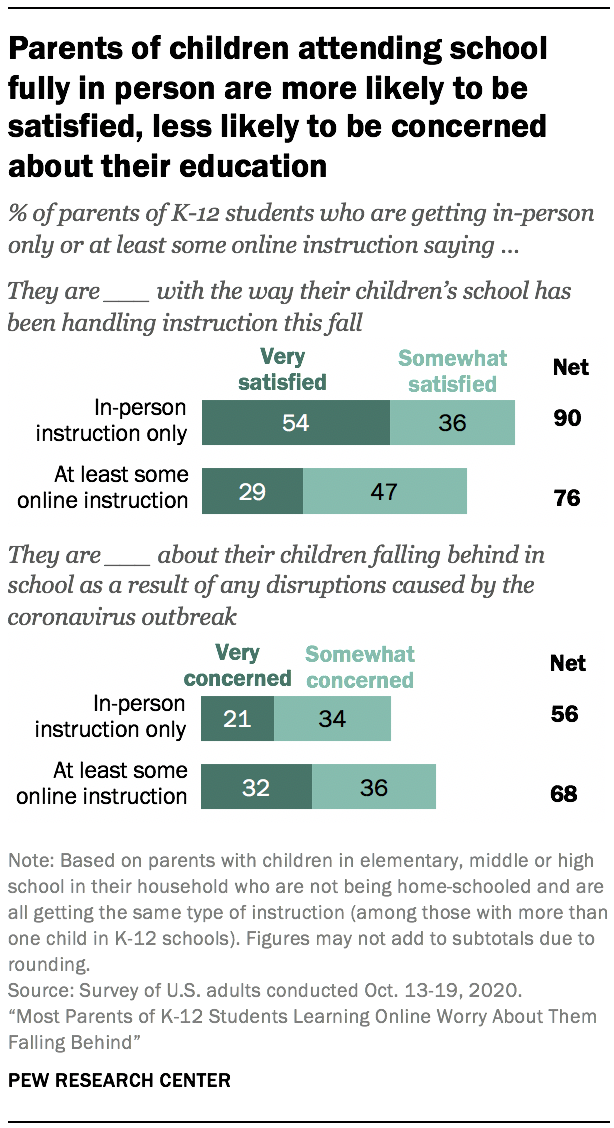 As faculty districts throughout the US proceed to grapple with one of the best ways to offer instruction amid the coronavirus outbreak, most oldsters of scholars in Okay-12 colleges categorical worry about their youngsters falling in the back of in class as a result of disruptions led to by way of the pandemic. There are massive divides between mother and father whose youngsters are going to college totally in-person and the ones whose youngsters are engaged in on-line studying on the subject of their tests of and issues concerning the schooling their children are these days receiving, in step with a brand new Pew Analysis Middle survey.
As faculty districts throughout the US proceed to grapple with one of the best ways to offer instruction amid the coronavirus outbreak, most oldsters of scholars in Okay-12 colleges categorical worry about their youngsters falling in the back of in class as a result of disruptions led to by way of the pandemic. There are massive divides between mother and father whose youngsters are going to college totally in-person and the ones whose youngsters are engaged in on-line studying on the subject of their tests of and issues concerning the schooling their children are these days receiving, in step with a brand new Pew Analysis Middle survey.
Oldsters of Okay-12 college students who’re getting most effective in-person instruction are the perhaps to mention they’re very glad with the best way their youngsters’s faculty is dealing with instruction amid the pandemic: 54% say this, when compared with 30% of the ones whose youngsters are getting on-line instruction most effective and 27% of oldsters whose youngsters are getting a mixture of in-person and on-line instruction. Nonetheless, massive majorities of oldsters throughout those instruction varieties say they’re no less than fairly glad with the best way their youngsters’s faculty is dealing with instruction.
Issues about youngsters falling in the back of in class are in particular commonplace amongst mother and father of Okay-12 college students who’re getting no less than some on-line instruction q4; the ones whose youngsters are getting a mixture of in-person and on-line instruction are probably the most involved. Seven-in-ten mother and father whose youngsters are getting on-line instruction – both totally or together with in-person studying – say they or some other grownup of their family is offering no less than some further instruction or assets to their youngsters past what’s being equipped by way of the varsity. That is considerably upper than the percentage amongst mother and father whose youngsters are getting most effective in-person instruction (52%).
 Amongst the ones whose youngsters are attending faculty in consumer, 45% say they’re very glad with the stairs their youngsters’s faculty is taking to forestall the unfold of coronavirus, and that is particularly so amongst mother and father whose youngsters are receiving in-person instruction most effective (52% vs. 39% of the ones whose youngsters are getting a mixture of in-person and on-line instruction). Nonetheless, mother and father whose youngsters are attending faculty in consumer categorical some worry about their youngsters being uncovered to coronavirus in class: 62% are no less than fairly involved, with 20% pronouncing they’re very involved.
Amongst the ones whose youngsters are attending faculty in consumer, 45% say they’re very glad with the stairs their youngsters’s faculty is taking to forestall the unfold of coronavirus, and that is particularly so amongst mother and father whose youngsters are receiving in-person instruction most effective (52% vs. 39% of the ones whose youngsters are getting a mixture of in-person and on-line instruction). Nonetheless, mother and father whose youngsters are attending faculty in consumer categorical some worry about their youngsters being uncovered to coronavirus in class: 62% are no less than fairly involved, with 20% pronouncing they’re very involved.
The survey additionally reveals some variations by way of revenue. As an example, mother and father of Okay-12 college students with decrease earning (72%) are much more likely than middle-income (63%) and upper-income mother and father (55%) to mention they’re very or fairly interested in their youngsters falling in the back of in class on account of disruptions led to by way of the pandemic. And lower-income mother and father (72%) are much more likely than the ones within the upper-income tier (58%) to mention they or some other grownup of their family is offering no less than some further instruction or assets to their youngsters past what’s being equipped by way of the varsity. In flip, upper-income mother and father are the perhaps to mention they’ve employed anyone to offer further instruction or assets (19% vs. 7% of middle-income and eight% of lower-income mother and father).
Those are a number of the key findings of a Pew Analysis Middle survey of 10,332 U.S. adults carried out Oct. 13-19, 2020, the use of the Middle’s American Tendencies Panel. The survey, which contains 2,561 mother and father with youngsters more youthful than 18 residing within the family, additionally explores broader issues of oldsters of youngsters in Okay-12 colleges and more youthful concerning the have an effect on of the coronavirus outbreak on their youngsters’s construction and well-being.
Decrease-income mother and father of Okay-12 college students are much more likely to mention their youngsters are getting on-line instruction most effective
Contents
- 1 Decrease-income mother and father of Okay-12 college students are much more likely to mention their youngsters are getting on-line instruction most effective
- 2 Oldsters of Okay-12 college students receiving most effective in-person instruction are extra glad than the ones whose youngsters are studying on-line
- 3 Most folks of Okay-12 college students are anxious about their youngsters falling in the back of in class as a result of pandemic-related disruptions
- 4 Most folks of Okay-12 college students say they or anyone else of their family is offering further instruction past what colleges are offering
- 5 Higher-income mother and father of Okay-12 college students are the perhaps to mention they’ve employed anyone to offer further instruction for his or her youngsters
- 6 Most folks of Okay-12 college students attending faculty in consumer are glad with steps to forestall virus unfold, however majority are nonetheless interested in youngsters’s publicity
- 7 Majorities of oldsters of Okay-12 college students extra involved now than prior to pandemic about display time, social connections, emotional well-being, get admission to to extracurricular actions
- 8 Amid coronavirus disruptions, mother and father of babies categorical extra worry about construction of social abilities than about language or bodily abilities
- 9 Decrease-income mother and father of Okay-12 college students are much more likely to mention their youngsters are getting on-line instruction most effective
- 10 Oldsters of Okay-12 college students receiving most effective in-person instruction are extra glad than the ones whose youngsters are studying on-line
- 11 Most folks of Okay-12 college students are anxious about their youngsters falling in the back of in class as a result of pandemic-related disruptions
- 12 Most folks of Okay-12 college students say they or anyone else of their family is offering further instruction past what colleges are offering
- 13 Higher-income mother and father of Okay-12 college students are the perhaps to mention they’ve employed anyone to offer further instruction for his or her youngsters
- 14 Most folks of Okay-12 college students attending faculty in consumer are glad with steps to forestall virus unfold, however majority are nonetheless interested in youngsters’s publicity
- 15 Majorities of oldsters of Okay-12 college students extra involved now than prior to pandemic about display time, social connections, emotional well-being, get admission to to extracurricular actions
- 16 Amid coronavirus disruptions, mother and father of babies categorical extra worry about construction of social abilities than about language or bodily abilities
With the autumn semester underway, 46% of oldsters with youngsters in basic, center or highschool of their family file that their youngsters are receiving on-line instruction most effective from their faculty; 20% say they’re getting most effective in-person instruction, and 23% say their youngsters are getting a mixture of on-line and in-person instruction (4% say they’ve other eventualities for various youngsters).
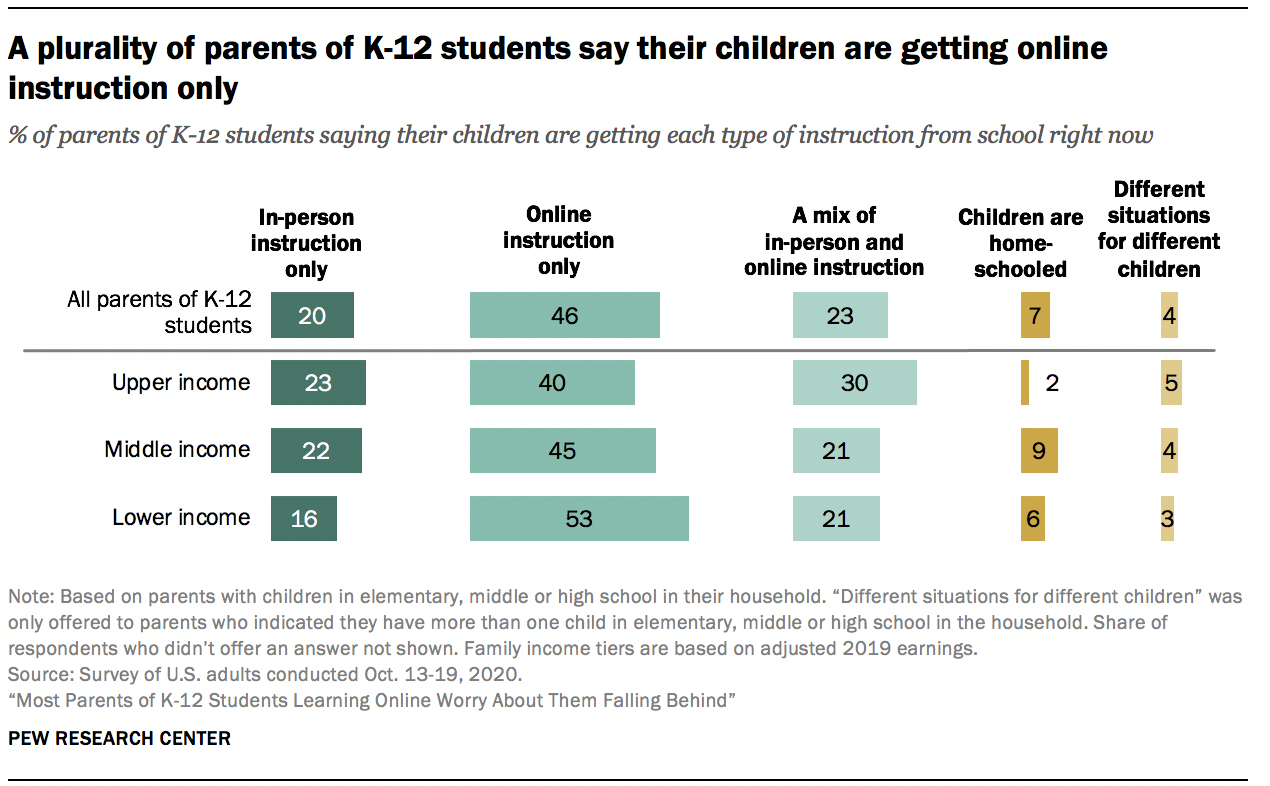
The percentage of oldsters with youngsters in Okay-12 schooling who say their youngsters are being home-schooled has risen considerably for the reason that spring: 7% q4, when compared with 3% in April. Decrease- and middle-income mother and father are much more likely than upper-income mother and father to mention their youngsters are being home-schooled (6% and 9% vs. 2%, respectively). In April, equivalent stocks of oldsters throughout revenue ranges mentioned this.
Oldsters of Okay-12 college students receiving most effective in-person instruction are extra glad than the ones whose youngsters are studying on-line
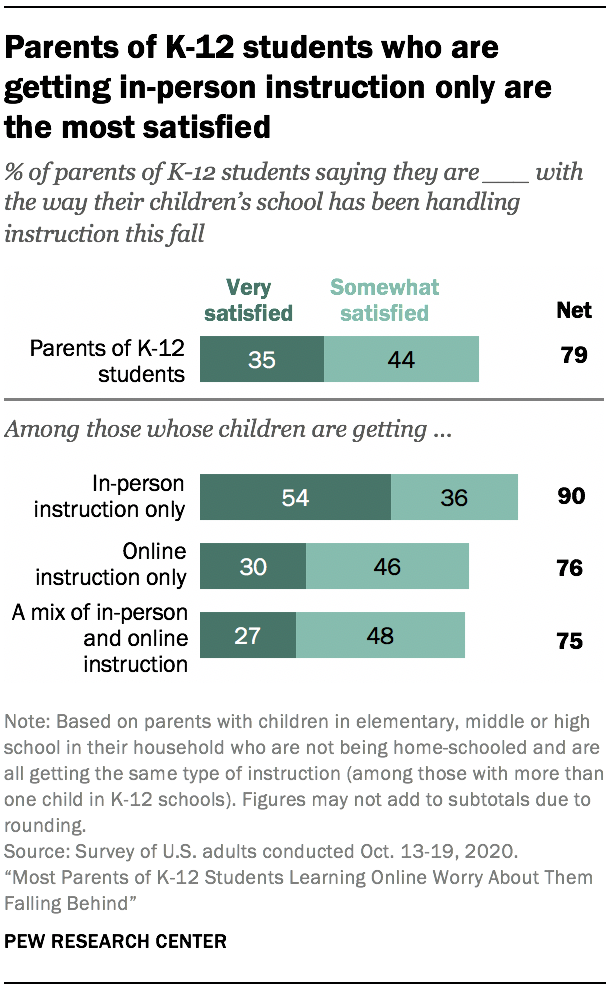 Amongst mother and father of Okay-12 college students who’re all getting the similar form of instruction in class, 35% say they’re very glad with the best way their youngsters’s faculty has been dealing with instruction; 44% are fairly glad, whilst 21% aren’t too or by no means glad. Equivalent stocks of oldsters throughout revenue ranges say they’re no less than fairly glad with the best way their youngsters’s faculty is dealing with instruction q4.
Amongst mother and father of Okay-12 college students who’re all getting the similar form of instruction in class, 35% say they’re very glad with the best way their youngsters’s faculty has been dealing with instruction; 44% are fairly glad, whilst 21% aren’t too or by no means glad. Equivalent stocks of oldsters throughout revenue ranges say they’re no less than fairly glad with the best way their youngsters’s faculty is dealing with instruction q4.
Oldsters whose youngsters are receiving in-person instruction most effective are, by way of some distance, probably the most glad with the best way their youngsters’s faculty has been dealing with instruction q4: 54% of those mother and father say they’re very glad, when compared with 30% of oldsters whose youngsters are getting on-line instruction most effective and 27% of those that say their youngsters are getting a mixture of in-person and on-line instruction. Nonetheless, three-quarters or extra in each and every of the 3 teams say they’re no less than fairly glad with the best way their youngsters’s faculty has been dealing with instruction.
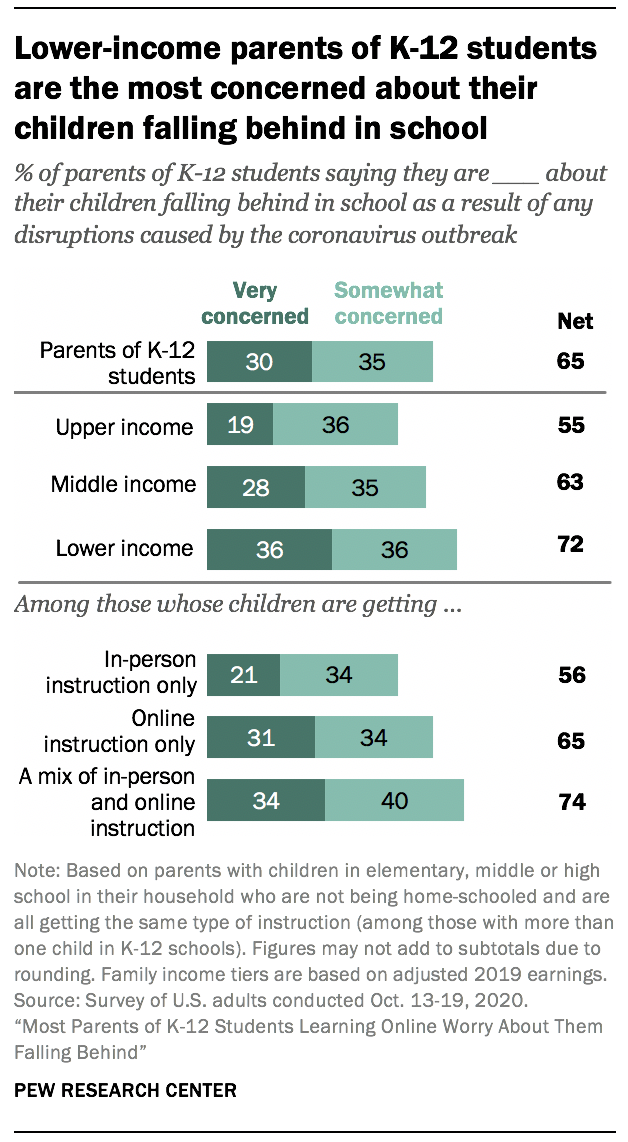 Amid disruptions led to by way of the coronavirus outbreak, a majority of oldsters of Okay-12 college students (65%) categorical no less than some worry about their youngsters falling in the back of in class, with three-in-ten pronouncing they’re very involved. Oldsters with decrease earning (72%) are much more likely than middle-income (63%) and upper-income (55%) mother and father to mention they’re interested in their youngsters falling in the back of in class on account of disruptions led to by way of the pandemic.
Amid disruptions led to by way of the coronavirus outbreak, a majority of oldsters of Okay-12 college students (65%) categorical no less than some worry about their youngsters falling in the back of in class, with three-in-ten pronouncing they’re very involved. Oldsters with decrease earning (72%) are much more likely than middle-income (63%) and upper-income (55%) mother and father to mention they’re interested in their youngsters falling in the back of in class on account of disruptions led to by way of the pandemic.
Oldsters whose youngsters are getting a mixture of in-person and on-line instruction are the perhaps to be interested in their youngsters falling in the back of in class, and the ones whose youngsters are getting in-person instruction most effective are the least more likely to be involved. About three-quarters of oldsters whose youngsters are getting a mixture of instruction (74%) say they’re very or fairly interested in their youngsters falling in the back of, when compared with 65% of the ones whose youngsters are getting on-line instruction most effective and 56% of the ones whose youngsters are getting in-person instruction most effective.
Most folks of Okay-12 college students say they or anyone else of their family is offering further instruction past what colleges are offering
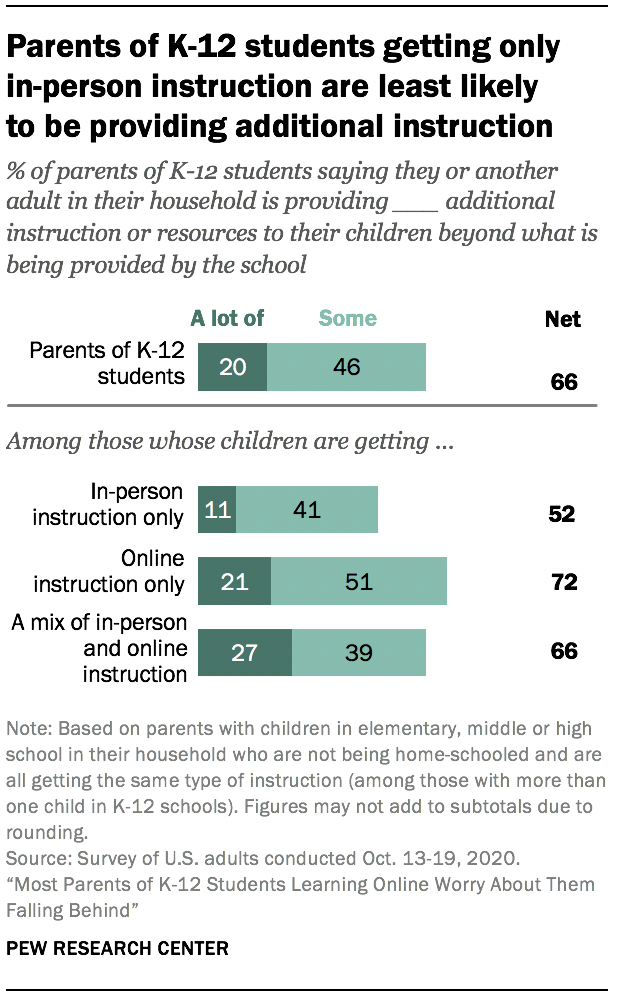 About two-thirds of oldsters of Okay-12 college students (66%) say they or some other grownup of their family is offering further instruction or assets to their youngsters past what’s being equipped by way of the varsity. That is very similar to the percentage who mentioned this in April, when Okay-12 colleges in all 50 states have been closed as a result of the pandemic.
About two-thirds of oldsters of Okay-12 college students (66%) say they or some other grownup of their family is offering further instruction or assets to their youngsters past what’s being equipped by way of the varsity. That is very similar to the percentage who mentioned this in April, when Okay-12 colleges in all 50 states have been closed as a result of the pandemic.
Oldsters whose youngsters are receiving on-line instruction most effective (72%) or a mixture of in-person and on-line instruction (66%) are much more likely than the ones whose youngsters are receiving in-person instruction most effective (52%) to mention they or some other grownup of their family is offering no less than some further instruction or assets to their youngsters. Amongst lower-income mother and father, 72% say they or some other grownup of their family is offering further instruction or assets, when compared with 58% of upper-income mother and father; 65% of middle-income mother and father say the similar.
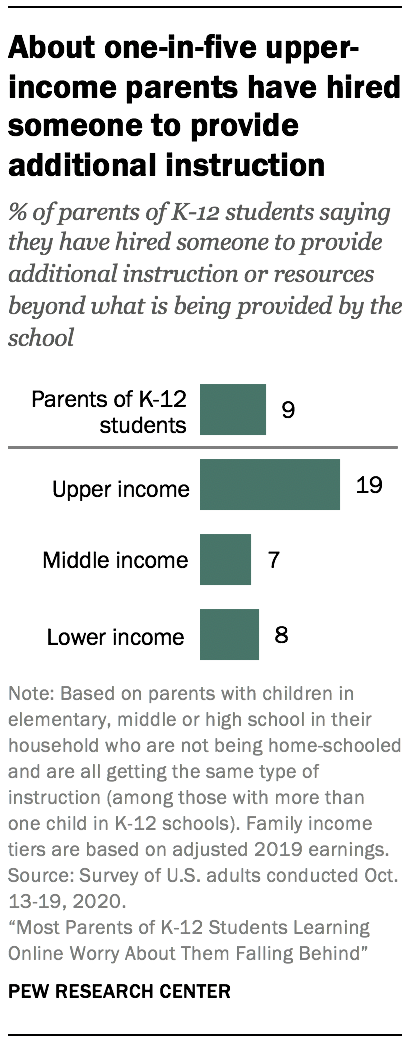 Higher-income mother and father of Okay-12 college students are the perhaps to mention they’ve employed anyone to offer further instruction for his or her youngsters
Higher-income mother and father of Okay-12 college students are the perhaps to mention they’ve employed anyone to offer further instruction for his or her youngsters
Whilst many fogeys of Okay-12 college students say they or some other grownup of their family is offering further instruction or assets to their youngsters past what’s being equipped by way of the varsity, a rather small proportion (9%) say they’ve employed anyone to try this. Oldsters whose youngsters are getting a mixture of in-person and on-line instruction are the perhaps to mention they’ve employed anyone to try this (14% vs. 8% of the ones whose youngsters are getting on-line instruction most effective and six% of the ones whose youngsters are getting in-person instruction most effective).
Amongst upper-income mother and father, 19% say they’ve employed anyone to offer further instruction or assets past what’s being equipped by way of their youngsters’s faculty. A long way smaller stocks of the ones with decrease (8%) or center (7%) earning say they’ve performed this.
Most folks of Okay-12 college students attending faculty in consumer are glad with steps to forestall virus unfold, however majority are nonetheless interested in youngsters’s publicity
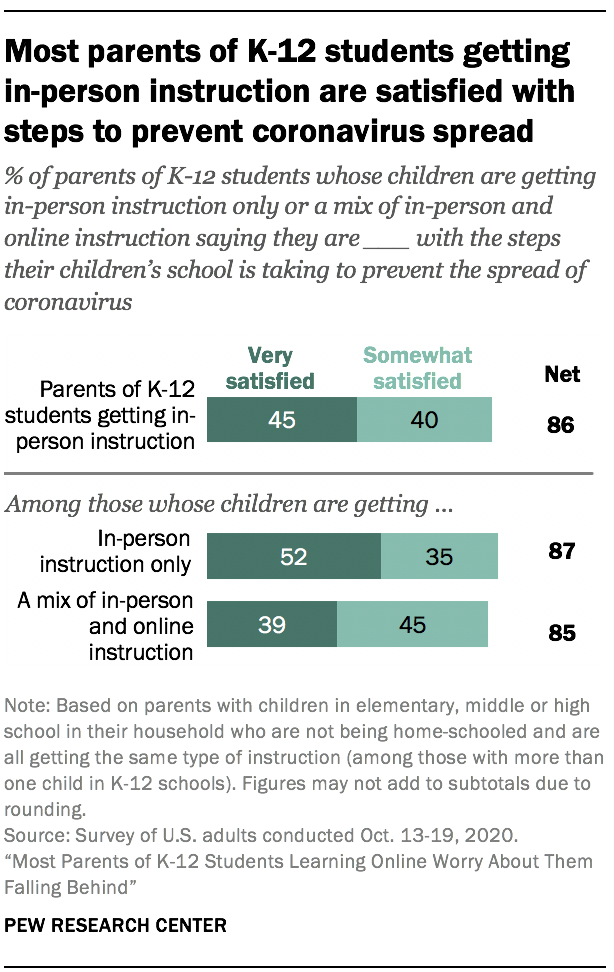 Greater than four-in-ten mother and father of Okay-12 college students who’re attending faculty in consumer (45%) say they’re very glad with the stairs their youngsters’s faculty is taking to forestall the unfold of the coronavirus; some other 40% say they’re fairly glad. Oldsters whose youngsters are getting in-person instruction most effective (52%) are some distance much more likely than the ones whose youngsters are getting a mixture of in-person and on-line instruction (39%) to mention they’re very glad with the stairs their youngsters’s faculty is taking.
Greater than four-in-ten mother and father of Okay-12 college students who’re attending faculty in consumer (45%) say they’re very glad with the stairs their youngsters’s faculty is taking to forestall the unfold of the coronavirus; some other 40% say they’re fairly glad. Oldsters whose youngsters are getting in-person instruction most effective (52%) are some distance much more likely than the ones whose youngsters are getting a mixture of in-person and on-line instruction (39%) to mention they’re very glad with the stairs their youngsters’s faculty is taking.
On the identical time, 62% of oldsters of Okay-12 college students who’re getting no less than some in-person instruction categorical worry about their youngsters being uncovered to the coronavirus in class; 20% say they’re very involved. Equivalent stocks of the ones whose youngsters are getting in-person instruction most effective and the ones whose youngsters are getting a mixture of in-person and on-line instruction say they’re very or fairly interested in this.
Majorities of oldsters of Okay-12 college students say that, when compared with prior to the coronavirus outbreak, they’re extra interested in each and every of the next for his or her youngsters: having an excessive amount of display time (63% say they’re extra interested in this now than prior to the outbreak), keeping up social connections and friendships (60%), their emotional well-being (59%) and gaining access to extracurricular actions (58%). About part (52%) say they’re extra anxious about their youngsters no longer getting sufficient workout than they have been prior to the coronavirus outbreak, whilst 31% say they’re now extra anxious about their youngsters spending an excessive amount of time unsupervised.
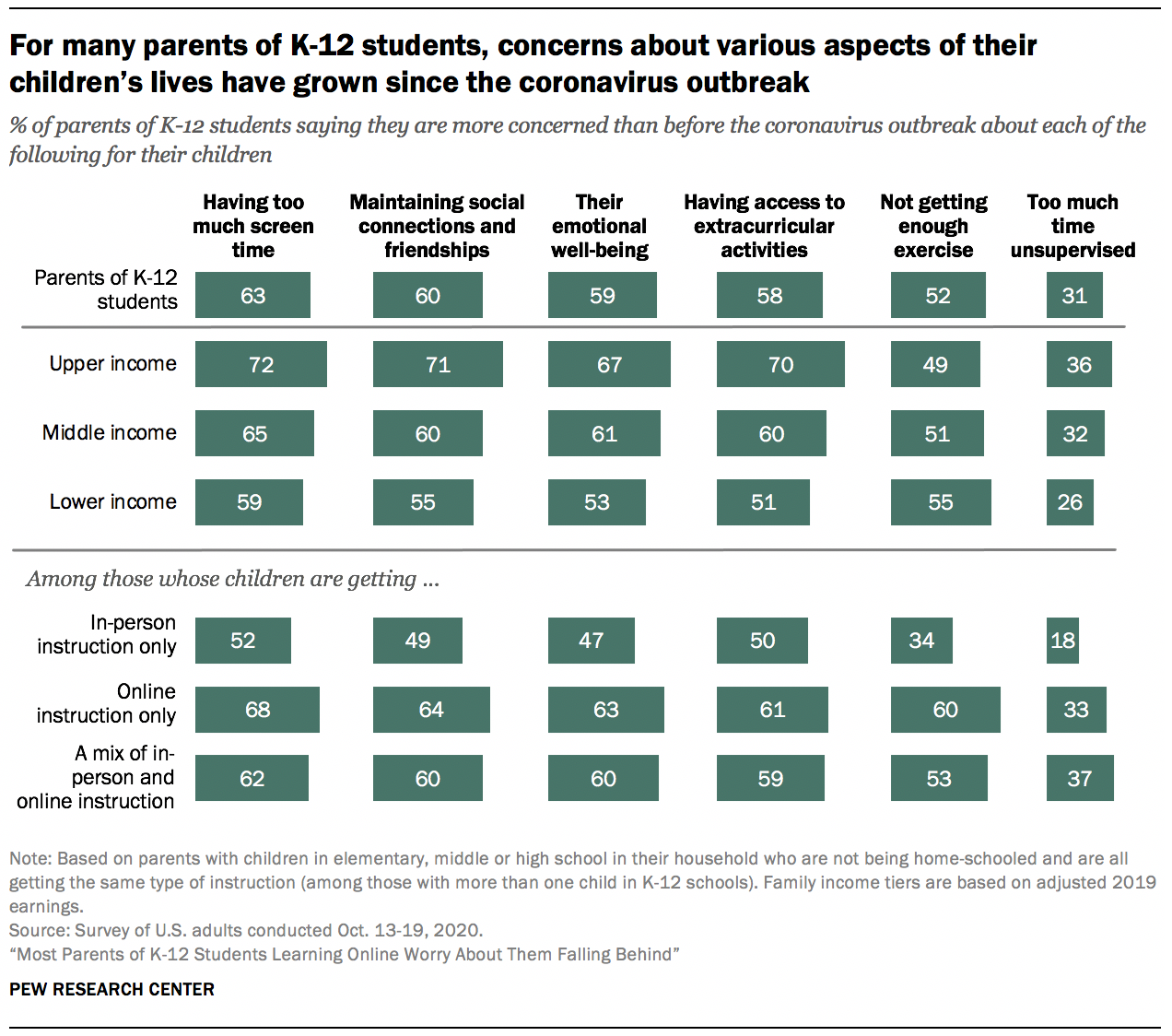
Oldsters’ issues range significantly relying on the kind of instruction youngsters are getting from their Okay-12 faculty. Specifically, on 5 of the six pieces, mother and father whose youngsters are getting no less than some on-line instruction are much more likely than the ones whose youngsters are getting in-person instruction most effective to mention they’re extra involved than they have been prior to the coronavirus outbreak. As an example, 64% of oldsters whose youngsters are getting on-line instruction most effective and 60% of the ones whose youngsters are getting a mixture of on-line and in-person instruction say they’re now extra interested in their youngsters keeping up social connections and friendships; 49% of oldsters whose youngsters are getting in-person instruction most effective say the similar.
Higher-income mother and father of Okay-12 college students are much more likely than the ones with center or decrease earning to mention they’re now extra involved than they have been prior to the coronavirus outbreak about their youngsters keeping up social connections and friendships and gaining access to extracurricular actions; and upper-income mother and father are much more likely than lower-income mother and father to mention they’re now extra interested in their youngsters having an excessive amount of display time and about their youngsters’s emotional well-being.
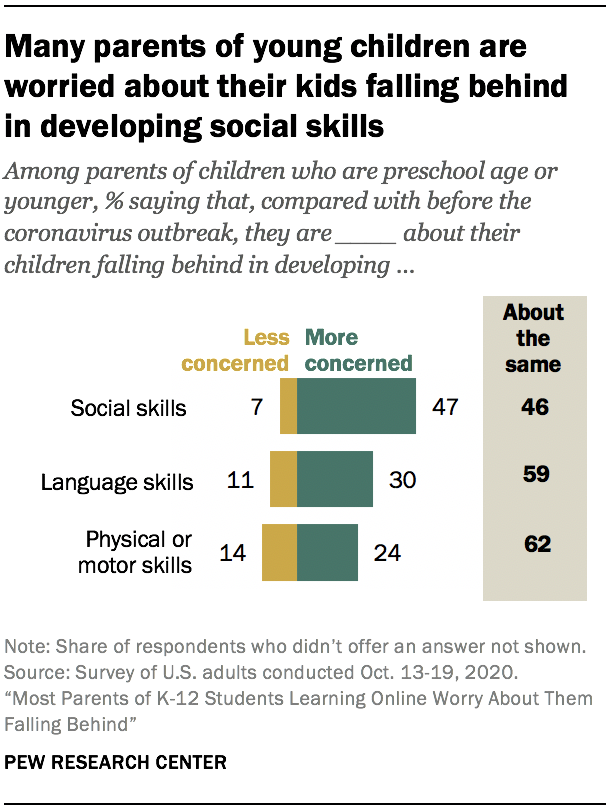 Oldsters of youngsters who aren’t but faculty age, just like mother and father of school-age youngsters, have issues about their youngsters’s construction on account of disruptions led to by way of the coronavirus outbreak. Some 47% of oldsters of youngsters who’re preschool age or more youthful say they’re extra anxious now than prior to the outbreak about their babies falling in the back of in growing social abilities. Smaller stocks say they’re extra involved now than prior to about their babies falling in the back of in growing language abilities (30%) and bodily or motor abilities (24%). Majorities of oldsters of youngsters who aren’t but faculty age say they’re about as involved as they have been prior to the coronavirus outbreak about their youngsters’s construction on the subject of bodily or motor abilities (62%) and language abilities (59%); 46% say the similar about social abilities.
Oldsters of youngsters who aren’t but faculty age, just like mother and father of school-age youngsters, have issues about their youngsters’s construction on account of disruptions led to by way of the coronavirus outbreak. Some 47% of oldsters of youngsters who’re preschool age or more youthful say they’re extra anxious now than prior to the outbreak about their babies falling in the back of in growing social abilities. Smaller stocks say they’re extra involved now than prior to about their babies falling in the back of in growing language abilities (30%) and bodily or motor abilities (24%). Majorities of oldsters of youngsters who aren’t but faculty age say they’re about as involved as they have been prior to the coronavirus outbreak about their youngsters’s construction on the subject of bodily or motor abilities (62%) and language abilities (59%); 46% say the similar about social abilities.
Amongst mother and father with youngsters in kid care settings, 47% are very glad with the stairs their day care or preschool is taking to forestall the unfold of coronavirus; 34% are fairly glad, whilst 17% aren’t too or by no means glad. General, 36% of oldsters with youngsters who’re preschool age or more youthful say their youngsters these days steadily attend an afternoon care or preschool, whilst 64% say their youngsters don’t.
